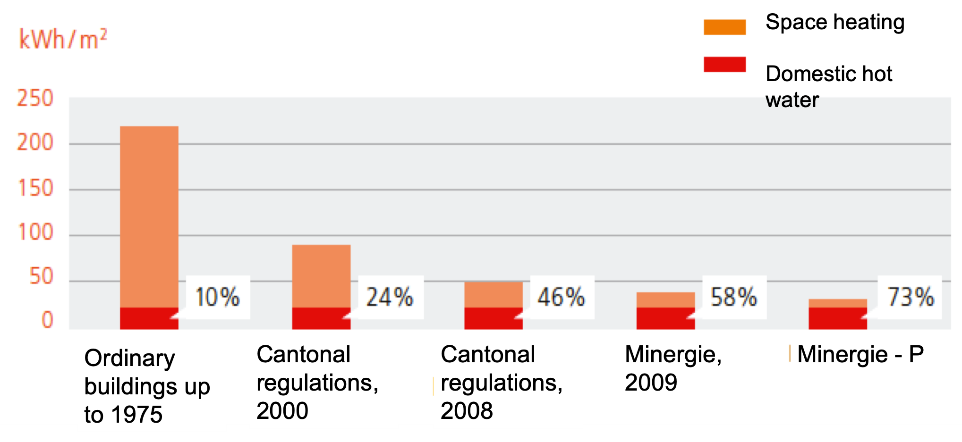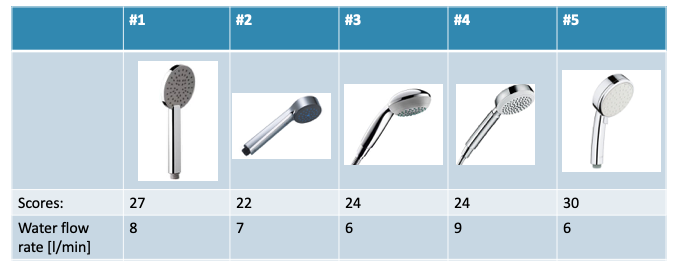Domestic hot water (DHW) is generally neglected in building refurbishment. However, DHW heat demand for office and school buildings could be reduced to almost zero by installing only to necessary points addressing only strictly necessary needs. In residential near zero energy buildings, DHW heat demand constitutes 1/3 to 1/2 of the total heat demand, as Figure 1 presents from Production efficace de l’eau chaude sanitaire Swiss Federal Office of Energy, OFEN (2017):

Figure 1: Heating energy demand in Swiss buildings
This case is a part of the ReCO2ST demonstration buildings. In the Swiss case study, particular attention to hot water production, storage, distribution and water needs, generated substantial energy savings. Monitoring before refurbishment showed very poor storage and distribution efficiency. 45% of the heat delivered to the hot water storage was lost before arriving to the tab. The heating cycles were too many, some dozens per day, with the heating system switching on and off very often.
The domestic hot water needs were almost 60 litres per person while according to “normal” conditions 50 litres were calculated for multifamily residential buildings. A multicriteria testing of shower heads in 12 families was performed, and a model was found to reduce water flow from a mean of 12 l/min before refurbishment, class D (varying between 8 and 25 l/min) to 6 l/min after refurbishment, class B. There was no push to get to class A, because if the water flow is too low and does not meet the tenant needs, they often change the shower heads by their own initiative and both objectives of energy savings and tenant satisfaction fail. Key qualitative criteria for tenant satisfaction is noise of the water jet and the ability of the jet to shower long hairs with foaming shampoo. The head shower with the highest score was selected. The shower heads and water taps were changed and a reduction of hot water consumption was achieved by 50 l/person after refurbishment.

Figure 2: Shower heads tested
Pipe insulation, rising the on-off hysteresis of the heating cycles to 10°C (heating when hot water temperature is <45°C – stop heating when hot water temperature is >55°C, with one anti-legionellosis cycle per day at 60°C), insulation of hot water pipes and stopping hot water recirculation and reducing storage temperature to 45°C during the night, reduced significantly the storage and the distribution losses.
Hot water production of the Swiss case study is assured by almost 100% renewable district heating, so the question of the hot water production scenario was not pertinent for this case study. If this was not the case, applying the ReCO2ST least cost method it was found that after the renewable district heating production, the best scenario is production of 60% of the hot water needs with solar collectors (and not preheating DHW only covering 30% of the needs which is the current usual practice). The least cost method also showed that heat recovery on ventilation extraction for DHW preheating or heating is by far the most expensive solution and less energy efficient solution, even when the heat pump uses renewable electricity from the building solar roof.